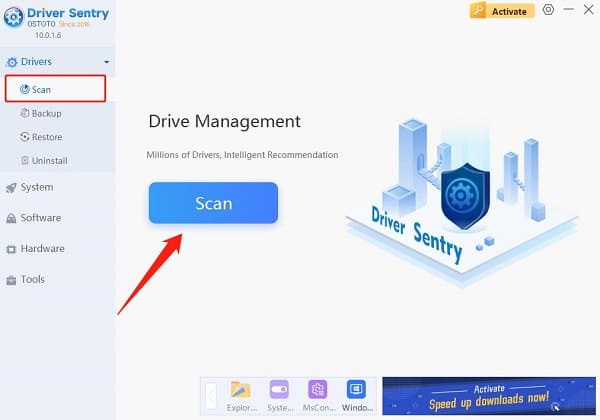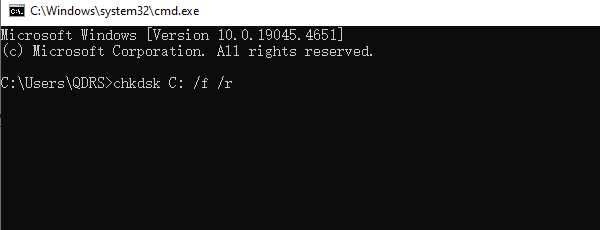
Users may encounter a common issue with "Windows: the Windows Boot Manager not appearing in BIOS". This can prevent normal booting and disrupt daily use. This article presents several effective methods to help resolve the issue.
Routine Maintenance
Drivers are an important bridge connecting the system and hardware devices. Keeping drivers up to date helps improve device performance, compatibility, and reduces the occurrence of system failures. It is recommended to use Driver Sentry for automatic driver updates, saving time and avoiding the risk of downloading or installing incorrect drivers.
Click the download button to get the latest version of Driver Sentry. After installation, open the software and click "Scan".

After scanning, it will show which drivers are missing or need updating. Find the driver that needs updating in the results list and click the "Update" button.
After the update is complete, it is advisable to restart the computer to ensure the updated drivers function correctly.
Method 1: Remove External Devices
First, completely shut down the computer.
Disconnect all USB devices, external hard drives, printers, and other peripherals, leaving only the keyboard and mouse connected.
Restart the computer and enter BIOS to see if the Windows Boot Manager is now displayed. If it appears, a peripheral device may have caused the issue.
Method 2: Change Boot Order in BIOS
Press the specific key (usually F2, Del, or Esc) during startup to enter BIOS settings.
In the BIOS interface, navigate to the "Boot" or "Boot Order" tab.
Ensure that the hard drive (containing the Windows partition) is set to the first in the boot order. Use the arrow keys to adjust the order.
Press F10 to save the changes and restart the computer.
Method 3: Create a New Boot Sector
Shut down your PC and then turn it back on. When you see the Windows logo, press and hold the power button to force shutdown. Repeat this until you enter the recovery window.
In the Windows Recovery Environment (Windows RE), select "Advanced Options".
Then select "Troubleshoot" > "Advanced Options" > "Command Prompt".

In the Command Prompt, type the following command and press Enter: bootrec /fixboot
After executing the command, you will see a message stating "Operation completed successfully".
Use Ctrl + Alt + Del to restart the computer and select the restart option.
Method 4: Rebuild Windows BCD
Follow the steps in Method 3 to access Windows RE.
In Command Prompt, enter the following command and press Enter: bootrec /rebuildbcd
Type the command attrib c:\boot\bcd -h -r -s to remove the read-only and hidden attributes from the Windows BCD.
Next, enter the command ren c:\boot\bcd bcd.old to rename the stored BCD to bcd.old.
Enter the command bootrec /rebuildbcd again and press Enter. You will be prompted to add boot to the list; type Y and press Enter.
Wait a moment until the message "Operation Successful" appears.
After completion, restart the computer to check if the issue is resolved.
Method 5: Use Command Prompt to Enable Boot Menu
Type "cmd" and select "Run as Administrator".
Enter the following command and press Enter: bcdedit /set {bootmgr} display bootmenu yes
After completion, restart the computer to see if the Windows Boot Manager appears.
Method 6: Check Hard Drive Health
Open Command Prompt as an administrator.
Enter the following command: chkdsk C: /f /r (C: is the drive where Windows is located).

Follow the prompts to complete the check, looking for and repairing any errors.
By following these methods, you can likely fix the "Windows Boot Manager not showing in BIOS" issue. If the problem persists, seek professional technical support. Regularly check your system and hardware to maintain optimal performance.
See also:
7 Ways to Fix Windows 11 Monitor Not Full Screen
Solutions for 0x0000001A Blue Screen Error and System Crash